On this page
Otago University PressThis page lists books about birds, or which include sections on birds, published by Otago University Press in New Zealand. The books are arranged by publication date with the most recent at the top.
|
|
|
|
Eco-Sanctuaries: Communities Building a Future for New Zealand's Threatened EcologiesDiane Campbell-Hunt
Editor: Colin Campbell-Hunt
Otago University Press
2013
"Over the past 10 years many communities around the country have launched ambitious projects to bring New Zealands native ecologies back to the mainland. By building predator-proof fences around big areas of land the aim is to protect native flora and fauna from introduced predators such as possums, mice, rats and stoats. These projects have faced a difficult balancing act as they try to build and sustain the social and economic support needed. Diane Campbell-Hunt was two years into a PhD study of the long-term sustainability of these ventures when she was tragically killed in a tramping accident in 2008. Her work had assembled the experience of a wide range of people involved with these projects -- volunteers, DOC staff, trustees, iwi, employees, community leaders and project champions. After Dianes death, her husband Colin took up the challenge to write up her research, and "Eco-sanctuaries" is the result."
|
Buy from amazon.co.uk 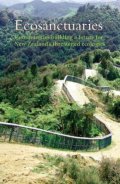
|
|
Seabird Genius: The Story of L.E. Richdale, the Royal Albatross, and the Yellow-eyed PenguinNeville Peat
Otago University Press
2011
"The first biography of Lance Richdale, who achieved international fame as the father of Otago's albatross colony from 1936 and for his research on the behaviour of the Yellow-eyed Penguin and the sooty shearwater, or muttonbird. Richdale grew up in Wanganui, took a tertiary course in agriculture in New South Wales, and returned to New Zealand to teach mainly in rural schools in the North Island for several years, eventually taking up a position with the Otago Education Board in 1928 as an inspiring itinerant agricultural instructor and nature study teacher. Richdale never gave up his day job and incredibly in the weekends, holidays and evenings undertook major, meticulous and time-consuming research on penguins, albatrosses and several petrel species. His study of the muttonbird was achieved during prolonged solo camps on tiny Whero Island in stormy Foveaux Strait, where the wind blew straight from Antarctica. Neville Peat's biography searches the traces left by this shy and obsessed man for some answers to two questions: why? and what drove him?"
|
Buy from amazon.co.uk 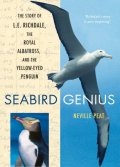
|
|
Wild Heart: The Possibility of Wilderness in Aotearoa New ZealandMick Abbott & Richard Reeve
Otago University Press
2011
"Images of pristine forests, mountain ranges, untameable rivers and empty expanses of coastline are the key attraction in how we promote Aotearoa New Zealand internationally: '100% Pure' no less. Such wildness is at this nation's psychological and physical core. This book searches for an understanding of 'the wild', of what makes wilderness such an important part of our psyche. The seventeen essays come from trampers, scientists, conservationists, policy-makers, photographers, historians, and writers. Together they examine many aspects of the idea of wilderness. What and where is New Zealand's wilderness? Is the wilderness something that we lock up or not? How do Maori see wilderness? How is it defined by law and what is government policy? Why? Where does that leave us? What do we want of wilderness? Can we exploit its resources? Wild Heart looks forward, as exploring the 'possibility' of wilderness lies at its core. What could wilderness in Aotearoa New Zealand become, and, consequently, what might we its people also become?"
|
Buy from amazon.co.uk 
|
|
Kiwi: The People's BirdNeville Peat
Otago University Press
2006
"Back in 1990, when Neville Peat wrote The Incredible Kiwi, the national bird was in retreat, from habitat loss and the severe impact of predation. It was not well understood, being nocturnal and hidden in the forest. Most Kiwis had never seen their national bird. During the 1990s, saving the kiwi became a popular cause. Community kiwi conservation projects have emerged all over the country, especially in the North Island. And scientific research has led to greater knowledge of the bird's population dynamics and distribution. The kiwi has truly become 'the people's bird'. In this book, the author describes the kiwi from every point of view, from wild bird to national emblem. What is this biological oddity called the kiwi? Exactly how many species of kiwi are there? Where do they live? What do they eat? How are people helping them to survive? Why does this bird have such a major place in the Kiwi nation's life? And he tells the story of the largest popular movement in support of an endangered native species that New Zealand has ever seen."
|
Buy from amazon.co.uk 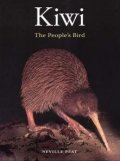
|
|
Wild Fiordland: Discovering the Natural History of a World Heritage AreaNeville Peat and Brian Patrick
Otago University Press
Revised edition
2005
"In a world largely modified by humans, Fiordland is a breathing space for nature. It is one of the planet's great wilderness areas, where monumental landscapes combine with a mosaic of miniature worlds. Located on the southwest coast of New Zealand, much of its landscape was formed by great valleys carved out by glaciers which are now half-drowned. Milford Sound is one of New Zealand's most remote but necessary tourist destinations, while Dusky Sound provided a home to Captain Cook's Resolution and its scientists, as well as artist William Hodges, for five weeks in 1773. This book is for travellers, nature-lovers and scientists alike."
|
Buy from amazon.co.uk 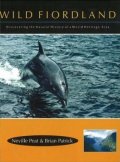
|
|
Restoring Kapiti: Nature's Second ChanceEditor: Kerry Brown
Otago University Press
2004
"Modern Kapiti Island is best known as a sanctuary for wildlife. It is one of New Zealand's longest and most exciting conservation stories, beginning in 1897. Projects here to eradicate possums and rats, and to increase or establish populations of endangered birds such as the little spotted kiwi, have put the country on the world map for conservation management and provided models to follow in other parts of the country. Animal pests are eradicated, weeds controlled, and the forests are returning. The island provides a home for a variety of endangered birds and other threatened fauna and flora. In the surrounding marine reserve, sea life is flourishing. This book is written by people who have contributed to the restoration of the island."
|
Buy from amazon.co.uk 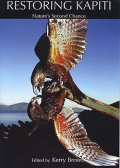
|
|
Our Islands, Our Selves: A History of Conservation in New ZealandDavid Young
Otago University Press
2004
"Beginning his history in antiquity, David Young follows the development of the New Zealand's conservationism from its first inhabitants to its "quarry economy" to its current problems of erosion, flooding, predator proliferation, and the loss of habitat and species. Throughout the volume, Young, the author of several books and essays about history and the environment, emphasises conservation's cultural origins. The text is beautifully illustrated with photographs of exotic flora and fauna, sketches, and portraits of conservation leaders."
|
Buy from amazon.co.uk 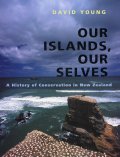
|
|
The Natural History of Southern New ZealandEditor: John Darby, R. Ewan Fordyce, Alan Mark, Keith Probert and Colin Townsend
Otago University Press
2003
"Fifty-three authors, most from scientific disciplines and leaders in their specialist fields, combine hundreds of years of collective expertise and research to describe the nature of the region in thirteen chapters. A publication on the scale of The Natural History of Southern New Zealand happens only once in a lifetime and this book takes the published knowledge of the south's natural history to a new and unprecedented level of richness and detail. The Natural History of Southern New Zealand takes an ecological approach and is more than a catalogue of terrestrial, freshwater and marine species and their habitats. It commences by exploring the origins of the region's rocks and works upwards and outwards, describing not only the species but how they interact with each other and with their environments. Authors examine geology, landforms, fossils, climate, biogeography, environmental change and the impact of human beings, before moving to a series of habitat-based chapters. Forests and shrublands, tussock grasslands and associated mountainlands, inland waters and wetlands, the coast and the open sea are discussed, and there is a closing chapter on conservation issues. Over 500 illustrations in colour include photographs and drawings."
|
Buy from amazon.co.uk 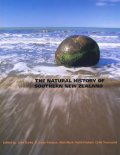
|
|
Wild Dunedin: Enjoying the Natural History of New Zealand's Wildlife CapitalNeville Peat and Brian Patrick
Otago University Press
Revised edition
2002
"Dunedin is a city where a walk on the beach can lead to an encounter with a sea-lion or little blue penguins emerging from the sea at dusk. Its formal boundaries include a huge area, from Mt Watkin near Waikouaiti inland to the Rock and Pillar Range and south to the Taieri, New Zealand's third-longest river. This represents a zone of endless interest, ranging from the seashore to high alpine environments. The city and its environs are home to an exciting range of habitats and landscapes, of plants, animals, birds, insects and geological features. This book, which is lavishly illustrated, introduces the general reader to such fascinating aspects of the natural environment as the Dunedin volcano whose crater now forms Otago Harbour, the endemic life forms found only in this region – such as the Caversham peripatus, the weird environment of New Zealand's only inland salt lake, the skink populations surviving in rocky outcrops where the New Zealand falcon has difficulty spotting them, as well as the more well-known and popular attractions, such as the yellow-eyed penguin and royal albatross colonies on the Otago Peninsula. Information has been added on the recently established Orokonui Ecosanctuary, the only predator-free mainland sanctuary in the South Island."
|
Buy from amazon.co.uk 
|
|
Southern Land, Southern PeopleNeville Peat
Otago University Press
2002
"This book celebrates Otago Museum's major new Southern Land, Southern People gallery, opened at the end of August 2002. It offers a comprehensive insight into the character of the region - its astonishing landforms, lost fauna and flora, fossil record and boisterous climate - and the way people have explored this challenging landscape and utilised its natural resources."
|
Buy from amazon.co.uk 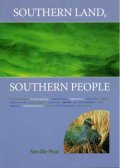
|
|
The Takahe: Fifty Years of Conservation Management and ResearchEditor: William G. Lee and Ian G. Jamieson
Otago University Press
2001
"The takahe is a large, flightless, herbivorous bird found in New Zealand. Nine contributions from the joint conference of the Ecological Societies of Australia and New Zealand reflect on attempts to conserve the takahe since its rediscovery (after presumed extinction) in 1948. A sampling of topics includes the origins and prehistoric ecology of takahe; population trends, dynamics and problems of fjordland takahe; and captive rearing."
|
Buy from amazon.co.uk 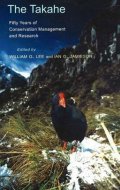
|
|
Wild Rivers: Discovering the Natural History of the Central South IslandNeville Peat and Brian Patrick
Otago University Press
2001
"This is the first book to describe in detail the natural history of this large region. A main focus is the braided rivers, which in world terms are rare and remarkable. They occur only in New Zealand, northern India, Tibet, Siberia and Argentina. Two things make these rivers remarkable: their ever-changing nature, and their nurturing of a diverse and unique community of plants, birds, fish, lizards and invertebrate life. Locally, of course, the braided rivers have long been appreciated, by anglers especially. Wild Rivers celebrates the biodiversity of the region in clear and readable text, with over 200 colour photographs, most never before published. The authors describe the special values of the region's flora and fauna, from riverbed birds such as stilts and wrybills, to introduced wallaby and tahr. They show the change of plant communities over time and the impacts of human settlement, farming and hydro-electricity."
|
Buy from amazon.co.uk 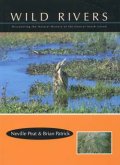
|
|
Stewart Island: A Rakiura RambleNeville Peat
Otago University Press
2000
"Packed with useful information, and colourfully illustrated, Stewart Island is a guide and souvenir rolled into one. The book covers what to see and do, highlights, local flora and fauna, and something of the history of the island. There is detailed information about walks and tramps, and numerous photographs of the stunning scenery and wildlife. Stewart Island is best known as a haven for native birds, such as the kiwi, weka, and on adjacent Codfish Island, the endangered kakapo. Along with the birdlife, Neville Peat also describes a number of other species - plants, insects, fish and lizards that are rare or unique to the island."
|
Buy from amazon.co.uk 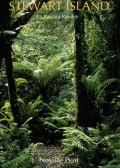
|
|
The Catlins and the Southern Scenic RouteNeville Peat
Otago University Press
1999
"An out-of-the-way corner in the south-east of the South Island, The Catlins is now gaining the recognition it deserves as a beautiful, relatively unspoilt area with many natural attractions, including that rare thing on the east coast, native forest. Neville Peat introduces the history, geology and attractions of the region – its flora, wildlife, bush walks, caves and waterfalls – before tracing the journey along the stunning Southern Scenic Route linking Otago, Southland and Fiordland."
|
Buy from amazon.co.uk 
|
|
Wild Central: Discovering the Natural History of Central OtagoNeville Peat and Brian Patrick
Otago University Press
1999
"Award-winning authors Neville Peat and Brian Patrick reveal some fascinating facts about this distinctive and spectacular region in their book Wild Central: Discovering the Natural History of Central Otago. They describe a region set apart from the rest of the country by its geology and climate, which nurture a diverse range of flora and fauna. The dryness of Central Otago has preserved an astounding array of fossil creatures from the past few thousand years - extinct birds, bats, tuatara and possibly the world's largest gecko. The lizards are a highlight, with seven skink species and seven gecko species identified from the region. The book covers a rather larger area than what most people define as 'Central'. The authors have followed the schist boundary in defining Central and that taking in the lakes region, and even bits of Northern Southland. The book is packed with interesting information. For example, did you know that Central Otago was home to crocodiles and gum trees fifteen million years ago? Or that seabirds, including the banded dotterel, breed high up in the mountains far from the sea?"
|
Buy from amazon.co.uk 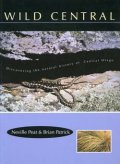
|
|
Wild Fiordland: Discovering the Natural History of a World Heritage AreaNeville Peat and Brian Patrick
Otago University Press
1996
"Two New Zealand-based conservationists provide a detailed discussion of the geology, climate, flora, fauna, and conservation issues relating to six geographical areas within the South Island's Fiordland National Park."
|
Buy from amazon.co.uk 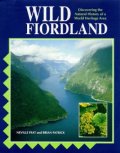
|
|
Wild Dunedin: Enjoying the Natural History of New Zealand's Wildlife CapitalNeville Peat and Brian Patrick
Otago University Press
1995
|
Buy from amazon.co.uk 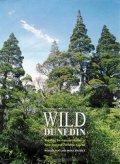
|
|